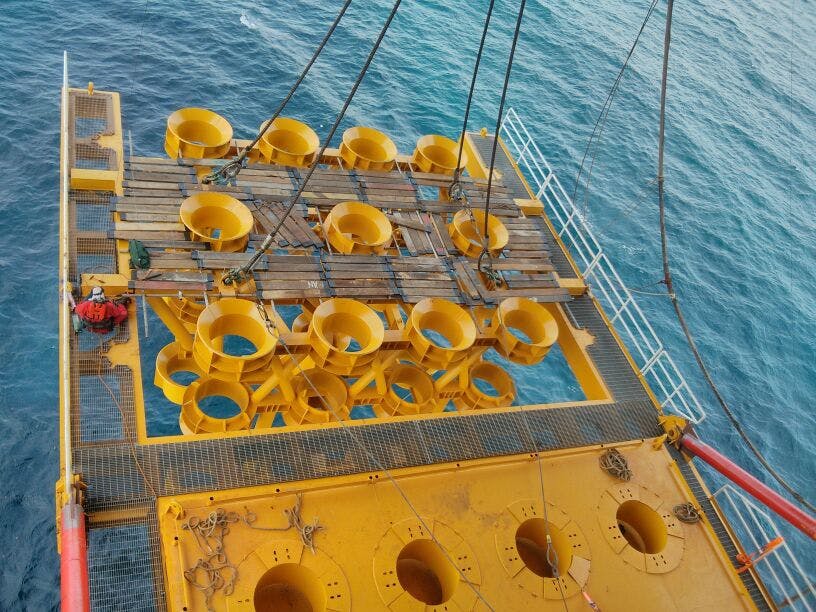Projects
Holistic Conductor Structural Assessment Using WellCat
2H performed a holistic structural assessment of ageing platform wells that significantly de-risked life extension and prevented costly repairs and shut-ins for the client.

Background
An error during installation had caused the centralizers pre-installed on a high-pressure, high-temperature (HPHT) platform conductor to be misaligned with the guide cans on the platform structure. The planned overlap of approximately 2.5 feet ended up being less than 6 inches after installation. While this left the conductor laterally supported in the cold state, there was concern that thermal growth of the conductor would cause the centralizers to move fully out of the guide cans when the well heated up in production mode, resulting in the loss of lateral support and instability of the well.
Project Scope
The client chose 2H to conduct analysis work to establish whether centralization would be fully lost at the conductor guides in all the operating modes. Once the centralization in each mode was confirmed, we were asked to confirm the strength, stability and fatigue performance of the conductor system in each mode. Shims were available to be retrofitted at surface guide elevations and remedial work to re-align the centralizers could have been performed by divers at the subsea guides. The client wished to identify the minimum remediation scope necessary to reduce the diving scope, any associated health and safety risks and the costs of repair. Consequently, a range of conductor centralization scenarios were considered to allow the optimum remediation activities to be identified.
Project Execution
Recognizing the important role that well pressure and temperature would play in the axial stress state of the conductor, surface casing and the strings carrying the weight of the well, the first step was to determine the effective hang-off loads at the wellhead in each of the casing strings. We performed calculations in WellCat for all stages of the well’s life cycle including construction, production operations, shut-in and abandonment.
We also used the WellCat model to establish the vertical movement of the wellhead from its nominal cold position in each life cycle stage. This movement was compared to the overlap of the centralizers at each guide to determine which centralizers would be providing lateral support to the well in each stage.
Finally, we developed a global analysis model of the platform well in Flexcom. This model used the axial loads determined by WellCat as boundary conditions. Centralization was included only at the guide elevations at which the centralizer was expected to remain in contact with the guide or remediation of centralization was being modelled. The well was analyzed under storm and fatigue loads in each life cycle stage. Maximum stress utilizations and fatigue damage rates in the conductor and surface casing were determined. We compared results from different centralizer configurations to establish the optimum remediation scope.
In all scenarios except production, thermal growth of the conductor was insufficient to lose all overlap of the centralizers with the guide cans. Without incorporating the WellCat results into the analysis this effect would have been completely missed and would have resulted in unnecessary costly remedial work.
Results
The 2H team’s assessment concluded, surprisingly, that no remediation work of any kind was required. We found that the production pressures and temperatures were high enough to completely overcome the weight of the casing strings and place the conductor into tension during production. In all scenarios except production, thermal growth of the conductor was insufficient to lose all overlap of the centralizers with the guide cans. Without incorporating the WellCat results into the analysis this effect would have been completely missed and would have resulted in unnecessary costly remedial work.
To learn more about our well engineering expertise, watch our on-demand webinar An Enhanced Analysis Approach for Complex Wells.

